CAUSES OF LAMENESS IN FARM ANIMALS AND ITS CONTROL
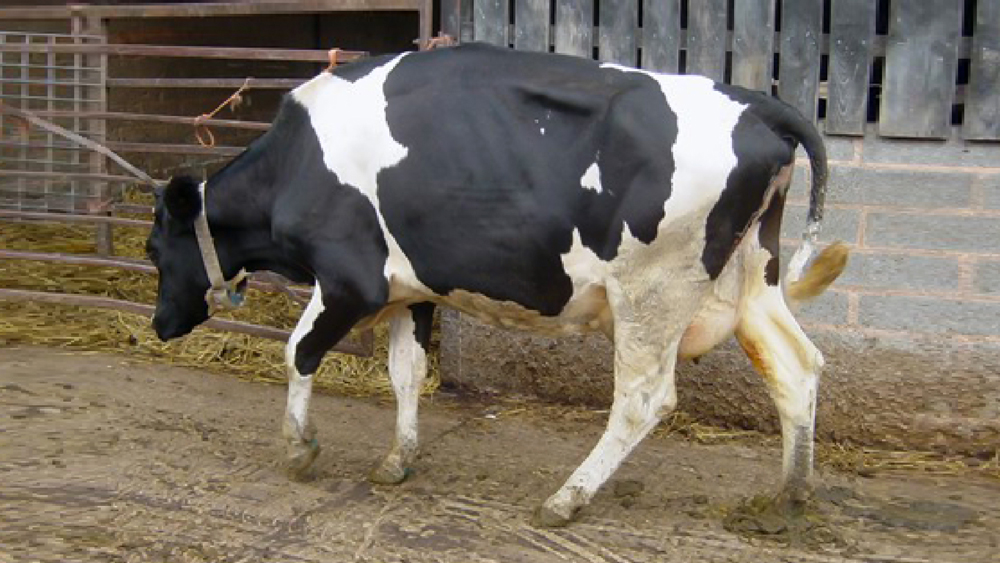
Lameness in simple words is the inability of an animal to walk, move or stand properly on its limbs. It may cause due to any injury, wound or disease resulting not only in physical loss of animals but economical loss as well. Lameness reduces the milk production, calves birth, delay or inability to conceive, retard growth, treatment cost and much more. This problem is much serious in cows with more weight and much more time to recover.
Animals suffering from lameness bear a lot of pain and discomfort. The annual incidence reported about lameness cases are 2.5% to 35%.
Animals suffering from lameness bear a lot of pain and discomfort. The annual incidence reported about lameness cases are 2.5% to 35%.
CAUSES OF LAMENESS
Following are the major causes of lameness in cattle:
Footrot
Footrot is the most common cause of infectious lameness in pasture and feedlot cattle. Footrot can be defined as “infectious pododermatitis”. Which means inflammation of skin and tissues in hoof area. It is cause by the invasion of specific bacteria
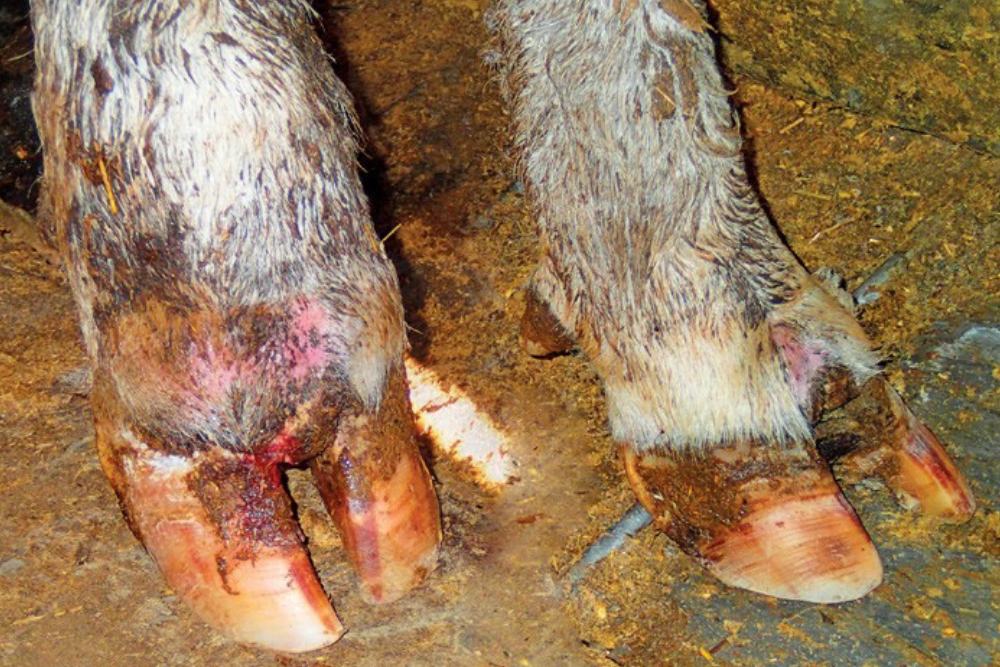
Fusobacterium necrophorum. These bacteria are widely present in soil and cow dung. Mostly targets the toes rather hoofs.
Hairy heel warts
Hairy heel warts recently got attention to be considered as the cause of lameness in cattle. In medical term named as “papillomatous digital dermatitis” were considered to be only present in dairy cattle but recently it has also found in feedlot cattle as well.
It is very contagious but how this disease starts in animals is still unknown. It has been thought that spirochete family of bacteria is involve in this infection.
Hairy heel warts recently got attention to be considered as the cause of lameness in cattle. In medical term named as “papillomatous digital dermatitis” were considered to be only present in dairy cattle but recently it has also found in feedlot cattle as well.
It is very contagious but how this disease starts in animals is still unknown. It has been thought that spirochete family of bacteria is involve in this infection.
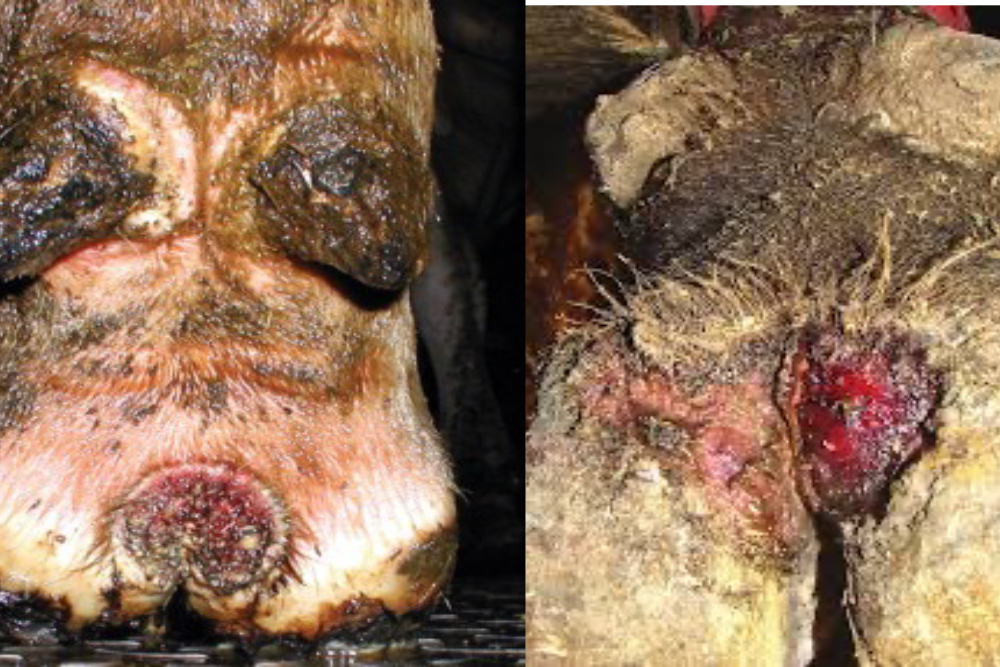
Laminitis
Acidosis is the major contributor to the Laminitis in feedlot calves as well as in adult beef cattle. Acute lameness occurs when the connections between hoof wall and underlying bone weakens and the structure begin to deteriorate. Acute laminitis in animals is not an infection rather it is the result of wrong feed delivery and exposure to grains that are not suitable to the cattle.
Joint infections
Any joints of the bovine limb potentially could nurture the infections. The most common joint affected by infection is coffin joint, the lowest joint of the limb near hoof ball. Perforating foreign particles may cause infection here. Another most common cause of joint infections is footrot infection that is not treated properly. The foreign agent that is associated with joint infections is Mycoplasma bovis. In feedlot calves, this germ enters into their bloodstream and cause an infection in the lungs resulting in respiratory diseases.
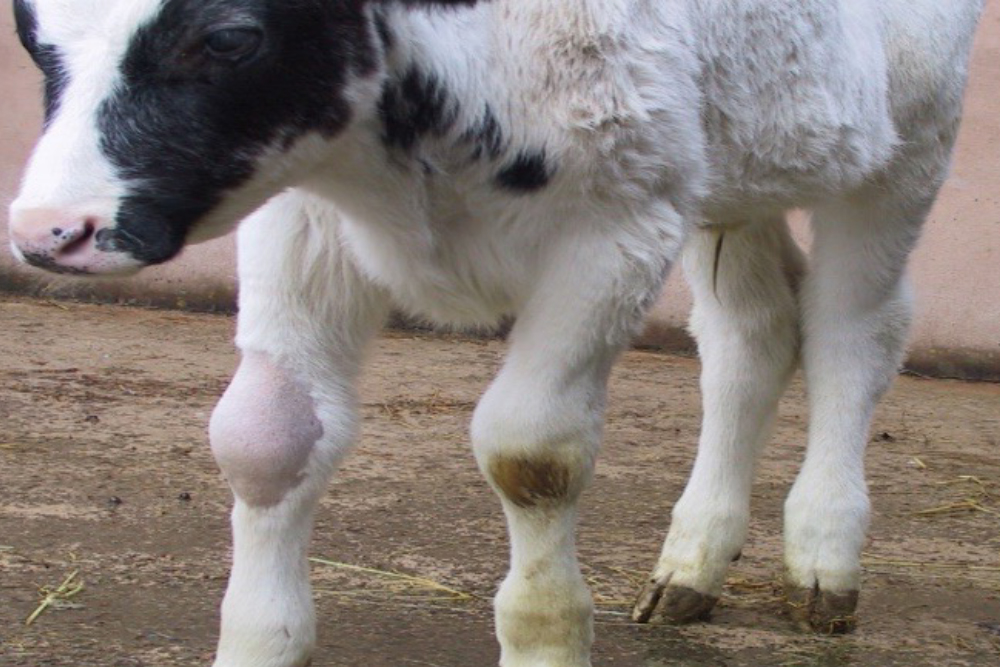
Toe Abscesses
Prolong infection results in toe abscesses. Abrasions and wearing away of toe tips generally happens in excited calves that have been handled on hard and rough concrete such as during loading and unloading.
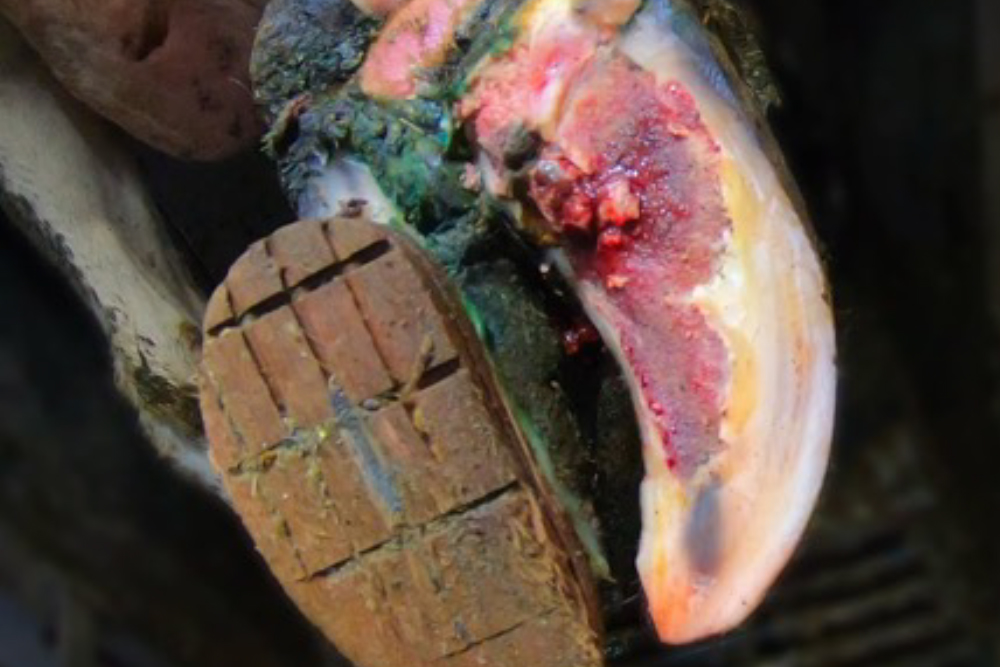
Toe Ulcers
Toe ulcers majorly cause due to unbalance or unsuitable diet than injury. It mostly happens when there is bleeding in the “white line” area of the toe.
These all infections and defects causes lameness in cattle. They need to be treated on time to avoid unbearable or irreversible loss.
These all infections and defects causes lameness in cattle. They need to be treated on time to avoid unbearable or irreversible loss.
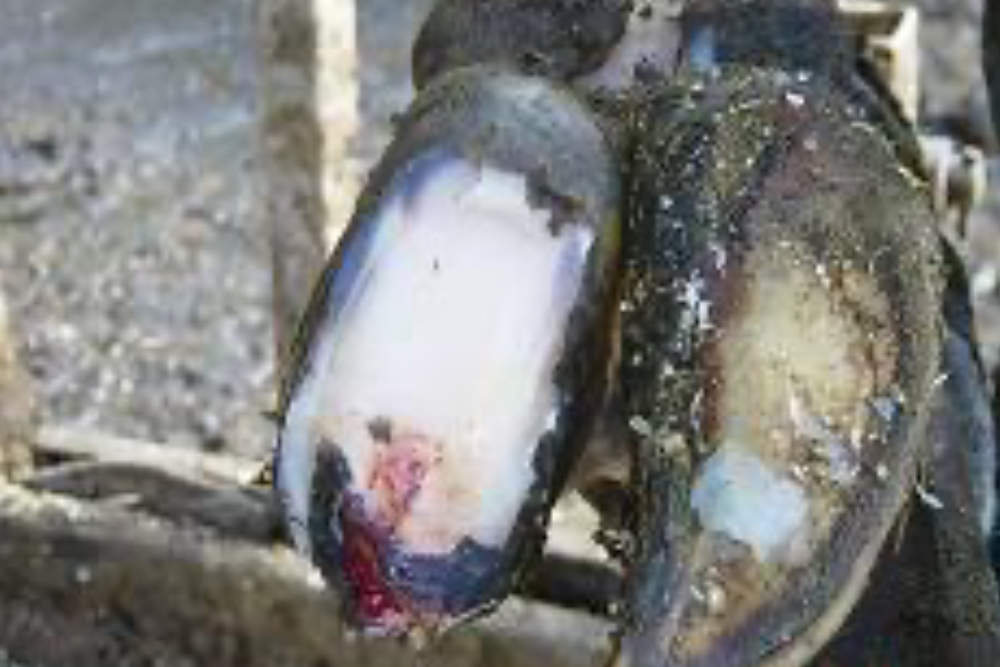
HOW TO CONTROL LAMENESS
Following steps can be taken to avoid lameness in dairy animals and save ourselves from the losses it causes.
HOOF TRIMMING
One of the best practice to avoid lameness in cattle is regular hoof trimming. It should be planned twice a year, especially before the start of dry season. It improves the comfort and performance of the animal. Hoof trimming is a stressful process for the cattle and it may result in the reduction of milk production right after the trimming is done but it is essential to avoid the long term loss that can happen cause of lameness.
NUTRITION
Proper nutrition intake reduces the number of foot diseases and infections. Most of the lameness issues occur within the first 100 days of postpartum. Laminitis and other lameness disorders results in the feed intake reduction and predispose the cows to abomasal displacement, ketosis and other metabolic disorders.
Rations that play role in acidosis are linked with laminitis, but it is really difficult to manage when the greatest percentage of diet of dairy cattle based on carbohydrates. Fiber levels should be measured while feeding the cows, similarly fiber should have proper concentration with right physical form and particle size. Large particle size increases the chewing time thus more saliva will produce and digestion will be efficient. Always feed your animals highly quality Dasan Dairy Feed / Dasan Wanda because a balanced nutrition help to cope your animals against diseases and different feed related conditions.
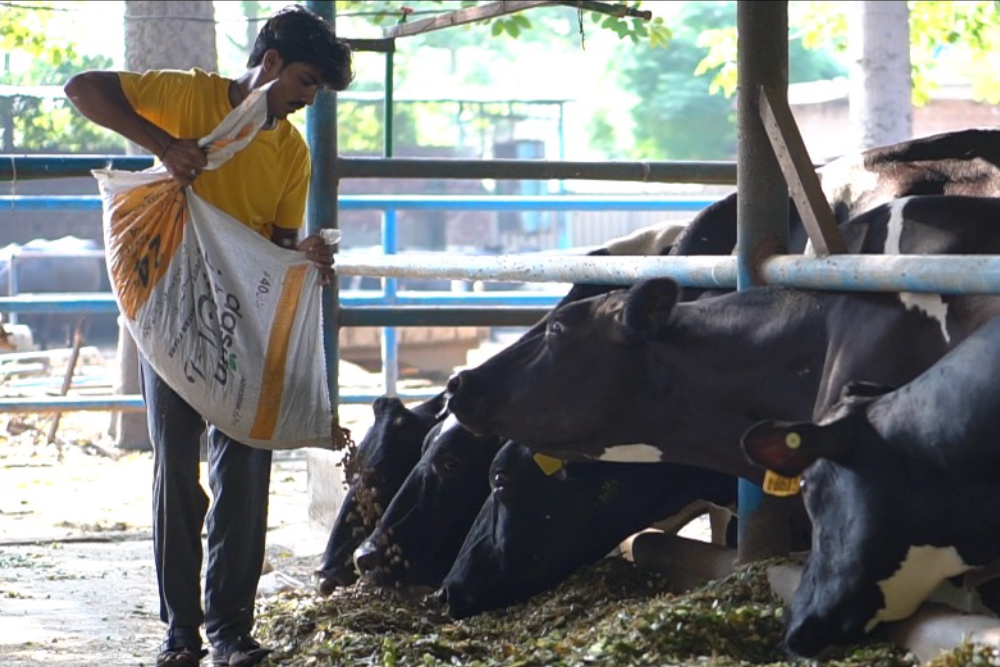
Further preventive measure that can be taken to control the lameness can be:
- Limit cow standing time
- Availability of comfortable space where cow can lie and rest for minimum 10 – 12 hours per day.
- Availability of fresh feed all the time to avoid intake of slug feed.
- Addition of buffers in high energy feed.
ENVIRONEMENT AND HOUSING
Dairy animal restricted to concrete will definitely have more foot and leg disorders as compare to others. Properly bedded and efficiently ventilated barns or shades will cheer cows to lay down. Cows having rest or lying time of about 10 – 12 hours per day shows more positive response towards environment and lesser foot disorders. Allowing cows to spend time on dirt or pasture surely reduce lameness.
HEAT ABATEMENT
Cows suffering from heat stress spend more time standing to dissipate heat load as compare to lying. If barns will not be well ventilated and installed with fans and sprinkle systems, cows will spend more time standing resulting in lameness. To avoid this issue, make sure the barns are well equipped for cooling purpose.
Foot problems are a big challenge for dairy industry. Care should be taken to avoid or to lesser this problem. Proper preventive measures should be taken on time to safe oneself from a big loss a minor carelessness may cause.
Foot problems are a big challenge for dairy industry. Care should be taken to avoid or to lesser this problem. Proper preventive measures should be taken on time to safe oneself from a big loss a minor carelessness may cause.
